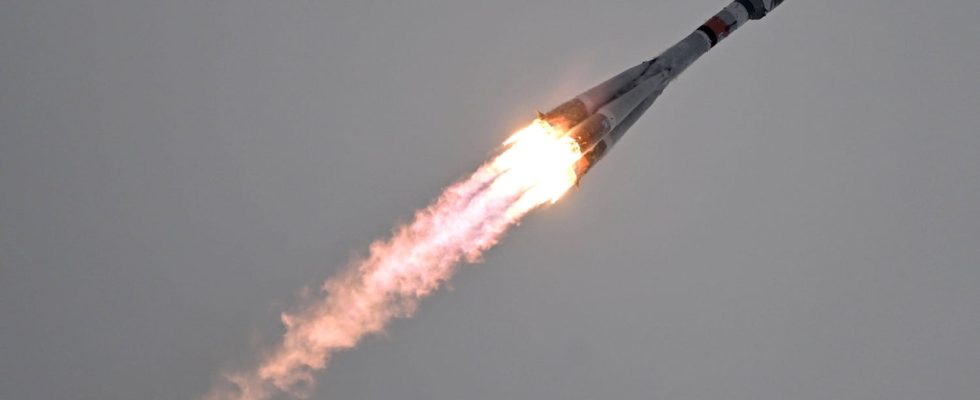LUNA 25. Russia ultimately failed in its attempt to land the Luna 25 probe at the South Pole of the Moon. On August 19, after losing contact with Earth, the craft crashed during a maneuver that was to precede landing.
While the moon landing was expected for Monday August 21, 2023, the Russian probe Luna 25 finally crashed on our natural satellite. After a transit and an orbit around the Moon successfully achieved, the device left the planned trajectory before colliding with the Moon on Saturday August 19. This loss marks the premature end of a symbolic mission for Roscosmos, the Russian space agency which hoped to reach our natural satellite again half a century after its last lunar mission in 1976.
In the space race, the Moon has become a new target for space agencies. As such, the Russia now goes it alone since the start of the war in Ukraine. For its part, NASA plans to send astronauts to the Moon as part of the Artemis program. As for China, it hopes to set up a base there for its taikonauts. For Russia, the stakes were all the more important as the Indian probe Chandrayaan-3 should land a few days later just 120 kilometers from the site chosen by Roscosmos for Luna 25. This crash may allow India to win this race at the lunar south pole, becoming at the same time the 4e nation to land on the Moon.
On Saturday August 19, 2023, while the Luna 25 probe was carrying out a maneuver preparing for its scheduled landing on August 21, contact between the device and the Russian agency was suddenly cut off around 2:57 p.m. (Paris time). For several hours, the Roscosmos agency tried to re-establish contact with the probe before announcing that the latter “ceased to exist following a collision with the lunar surface”. The craft lost contact with the control center and left its initial trajectory to crash into our natural satellite. We do not yet know the technical causes of this failure, but a study should be carried out in order to understand what caused the loss of Luna 25.
What is the Russian Luna probe 25?
Launched on August 11, 2023, Luna 25 is a space probe launched by Russia. Weighing 800 kilograms, it was a device designed to study the lunar soil. It was equipped with different engines allowing it to correct its trajectory during its orbit around the Moon, as well as to achieve its landing. It also had solar panels ensuring its power supply throughout its mission.
Many scientific instruments have been placed on board the probe, which is also equipped with a robotic arm to retrieve rock samples from the ground. Measuring devices were installed on the machine in order to study these samples. Finally, Luna 25 also carried cameras intended to produce a panorama of the landing site.

What is the Luna mission? 25?
The Luna 25 probe was to carry out a one-year mission to the lunar surface with a multiple objective. It essentially had to carry out analyzes on soil samples taken and studied using its onboard instruments. It should also allow Russia to acquire new information on the presence and availability of water in the form of ice, a highly coveted resource at the South Pole of the Moon.
The Luna 25 mission is the first Russian lunar mission since Luna 24 launched in 1976. It should therefore sign the great return of Russia in the conquest of the Moon. It is the first mission of a larger space program that will continue with the Luna 26 orbital probe and the Luna 27 lunar lander announced for 2027.
What photo did the Luna probe take? 25?
A few days before the collision with the Moon, the Luna 25 probe had transmitted its first photo of our satellite. We can see the Zeeman crater there, which is located not far from the South Pole of our natural satellite.

Where Luna was supposed to land 25?
The landing of the Luna 25 probe was to be carried out not far from the South Pole of the Moon, at the level of the Boguslawsky crater. The Russian space agency had, however, identified two backup sites in case the first was too difficult to reach. These two sites were both also located at the South Pole of the Moon.
